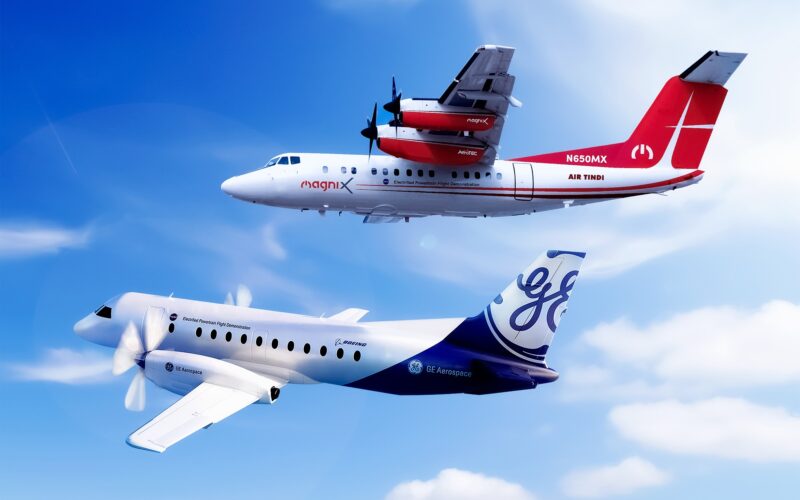GE Aerospace and magniX have revealed the liveries of the hybrid electric aircraft they will fly as part of NASA’s Electrified Powertrain Flight Demonstration (EFPD) project.
The unveiling was made at the Oshkosh air show in Wisconsin, United States (US) the world’s largest air show, on July 25, 2023.
Under the EPFD, GE Aerospace is developing a megawatt-class hybrid electric powertrain for ground and flight tests in the middle of this decade.
For the hybrid electric test flights, GE Aerospace is partnering with Boeing and its subsidiary Aurora Flight Sciences using a modified Saab 340B aircraft powered by GE’s CT7 engines.
The flight test campaigns will be based out of Aurora Flight Sciences’ facilities, including in Manassas, Virginia.
For its demonstration, magniX is partnering with AeroTEC and Air Tindi to test its hybrid powertrain installed on a modified De Havilland Dash 7 aircraft.
The flight test campaigns will be based out of the AeroTEC Flight Test Center in Moses Lake, Washington.
Each industry partnership will assist with integrating the electric aircraft propulsion systems into the flight demonstrators, as well as help with overall design, modification, and flight tests of the aircraft.
The project’s goal is to accelerate the transition of hybrid propulsion systems with megawatt (MW) levels of power to short-haul turboprop aircraft carrying 30-70 passengers and regional single-aisle commercial airliners carrying up to 180 passengers.
EPFD will also inform the development of new standards for next-generation hybrid electric aircraft.
NASA is targeting at least two flight demonstrations within the next five years to help introduce electric aircraft propulsion (EAP) systems to the US commercial fleet within the 2030-2035 timeframe.
“GE Aerospace envisions a more electric future of flight,” says Arjan Hegeman, general manager of advanced technology for GE Aerospace. “Our research collaborations with NASA continue to advance state-of-the-art propulsion systems with an important aim — to drive industry efforts to improve efficiency and reduce emissions compared to today’s aircraft engines.”

